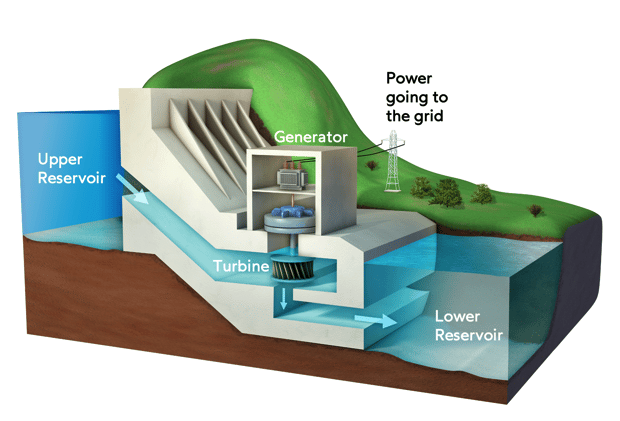Our quick digest of relevant news, products, and people making a difference in infrastructure.
Sunnier roads in Philly
What happened?
In case you missed it, Philadelphia was sent into a frenzy when a tanker truck carrying highly flammable cargo sparked a catastrophic event, resulting in the collapse of a crucial section of I-95. Though initially no injuries were reported, the truck driver’s remains were recovered later. The aftermath of this fiery ordeal left the city grappling with the repercussions of failing infrastructure.
But with Philly’s powers combined…
This collapsed section of I-95 through Philadelphia has reopened after just 12 days of round-the-clock repairs. The turnaround occurred months ahead of the original estimation using 15,000 cubic yards of ultra-lightweight foamed glass aggregate, or UL-FGA . This material is made completely from recycled glass and is quickly becoming a backfill staple. Say what you’d like about Eagles fans after a championship (too soon?), but they know how to fix their city. The governor attributed the success to everyone involved, including the dedicated union workers, the Mayor of Philadelphia, and the White House. With the highway’s reopening, workers are now constructing a new overpass to permanently replace the collapsed section. You can even watch the livestream of repairs on Twitch.
Has Concrete had its run?
It has a strong history.
They brought us the marathon and the Olympics, but Rome’s enduring strength went beyond their bodies. Roman engineers were famously successful in building with concrete that could get stronger with age, using volcanic rocks as the crucial ingredient for the aggregate-binding cement. Examples of their infrastructure still stand today. While concrete’s popularity is growing, so is its environmental impact, a factor unknown to the Romans who basked in less emissions and cooler air.

Builders of the pyramids would have a pretty low EMR rating, but the Egyptians successfully used mortar resembling today’s concrete to form the still-standing pyramids. Concrete exists in today’s form thanks to centuries of use (and more rigorous safety regulations). To see some of the oldest concrete structures in the world and what they’re made of, check out this site.
Concrete from Rome to Mars
We have a leg-up on the ancients, using modern science to make it both greener and stronger with the ability to self-repair its own cracks. A Colorado company called Prometheus Materials has developed a method that uses cyanobacteria. By adding cyanobacteria to cement, concrete forms with light energy instead of heat, meaning fewer carbon emissions. The process also removes CO2 from the atmosphere through photosynthesis. This concrete has also proven stronger than some conventional mixtures and the bacteria also repairs its own microcracks over time. This stuff is so useful, strong, and repairable, it has the potential to be used on Mars.
Isn’t timber all the environmental rage?
The Swedes think so. They’re planning a city completely made of wood. While wood is often crowned the top environmentally friendly construction choice of today, concrete isn’t going anywhere. It is still popular as a moldable and often colorful choice in design. As the industry continues to find methods in making concrete more sustainable, it is also finding methods in making concrete stronger, longer lasting, and easier to repair.
Into concrete? Here are some other articles:
- Some people are getting creative, mixing a bio-receptive solution that allows moss to grow and flourish on concrete.
- Translucent concrete has been a hot trend, using typical concrete mixtures and optical fibers. Wanna make your own?
Powering Europe is getting tough
The power industry is experiencing big pivots in Europe. The conflict with Russia has blocked natural gas resources for many, forcing the continent to revert back to fossil fuels to meet immediate demand. Europe is scrambling to find cleaner domestic energy, but it’s running into issues with a couple of the key players that keep on the lights.
Europe is hot.
And not in a good way. Hydropower is a great option for most countries with reliable water supplies, but Europe is experiencing record heat and drought, depleting the water supply needed to effectively generate power. It doesn’t look like it will cool down anytime soon.

Hydropower is created when currents push through a dam, producing power through a generator that is fed to the grid. Want to learn more? We’re not big gamblers, so a trip to Niagara Falls for anyone on our team means we’re a little more interested in the water falls and the historic hydropower plants they fueled. Tour facilities on both sides of the falls. You can learn the basics of hydropower while understanding the insane construction efforts that went into these historic spaces. We imagine the project team’s EMR ratings weren’t much better than the builders of the pyramids.
Is nuclear worth it?
Maybe. Maybe not. Climate scientists are split. Pro- it’s clean and it works. Con- it’s expensive and a bit of a touchy subject in this political climate. Russia is responsible for more than a third of global imports of enriched uranium, making its supply to the West similarly precarious as natural gas. While extremely low-emission, nuclear costs have risen over the past decade as solar and wind have fallen dramatically. Germany shut down its remaining 3 nuclear plants in April after concluding the cost and risk is not worth extending the runtime. However, France and other EU members continue to rely on and invest in nuclear energy.
With renewable resources being cheaper and faster to build and upgrade, nuclear may be a good low-emission solution in the short-term to support the clean energy transition. Eyes are on France and other EU members to see if it works for the long-term.
(It isn’t likely to go away.)
Isn’t it sunny (and windy) in Europe?
Sure is. Technology means wind and solar are rapidly becoming the go-to affordable options. In May of this year, wind and solar produced more energy than fossil fuels in Europe, proving a more affordable option than nuclear, gas, and most other power resources available in Europe. Despite solar power outgrowing all options on the continent, dino juice still grew in consumption in 2022. In fact, most of the world still depends on fossil fuels.
Our Network in the News
With EVstudio, Breckenridge goes Modular
A project recently mentioned in Governor Polis’ State of the State address, EVstudio designs the popular ski destination’s new affordable housing modular apartment complex.
Colorado has made headlines for its recent housing crisis, and Breckenridge is one of its many mountain towns lacking affordable options for people who live and work in the community, but they’re trying something new – a modular apartment complex. This complex will provide rent between $800 and $1200 per month, using a high-quality, fast-track modular process, designed by EVstudio and manufactured locally by Fading West. The project has garnered state-wide attention as a model solution to the Colorado housing crisis, including a nod in Governor Polis’ State of the State.
Our Network Celebrations
- Shaeffer Hyde Construction launched a new website with our website design team, featuring their high-end multi-million dollar homes in the mountains of Colorado. Whether you’re looking to build a multi-million dollar mountain home with a reputable firm or you leisurely scope the mansions for sale on real estate apps, this site is for you.
- Preston Design and Construction Consulting, or PDCC, won the Carol Robertson Center project in Chicago. Amy and her team are completing the Project Management scope of work. Wonderstruct created the proposal and social media announcements for this project.
Want to be featured in our newsletter? Reach out!